TRAILSTAR ™
TGO Magazine “Best Shelter” Award Winner
WEIGHT: 11 – 15 oz | 311 – 428 gm
SQ FOOTAGE: 65 + sq ft | 6 + sq m
SLEEPS: + GEAR
The award winning TrailStar combines the high performance of a traditional pyramid shelter with the open multi-function pitching options of a tarp. This original shaped tarp has five equal low-angle sides, no doors, and no zippers, flaps or vents to wear out or fail you when you need them most.
The TrailStar comfortably sleeps 2 – 3 people but can accommodate 4 in a pinch! If purchased with the optional InnerNet – it can be used as a double walled tent, or as a tarp. This tarp can also be set up as a shelter for day hikers and ski groups for lunch stops and emergencies, with room for five to eight people to sit inside!
“The forecast was for around 35mph winds through the night but we were hit with winds averaging 60-70mph. Neither Trailstar moved or gave us concern in the night…” – TRAILSTAR REVIEW
NOTE: TrailStar copies from China are being sold on the web that use inferior construction and weak fabric. Those will not stand up to hard wind!!! BEWARE
Five equal size panels blend shelter protection with tarp pitching ease and multiple shape options. One or two sides of the TrailStar can be staked tight to the ground while the other sides are set higher, using longer guylines, to make it a wedge shape. This allows you to block the wind from one or more directions while still getting great views from the others. For really harsh wind, all ten stake points can be used for an incredibly stable, low, wind shedding, bombproof shelter. Pitched all the way low it should be able to handle 60 mph winds! The TrailStar can be pitched really high, a la “Walk in Cabana” using a long stick or two trek poles lashed together and longer guylines. Read the “Tent Set Up” tab for more pitching options!
FEATURES
• Fast Setup – No Doors, Zippers or Moving Parts
• BOMBER alpine wind protection when compared with a tarp.
• Five equal size panels blend shelter protection with tarp pitching ease and multiple shape options
• The 7′ | 2.1 m long baseline on each of the five equal sides create a very large pentagon shaped floor plan living space for up to three people plus
• Gear and up to five in a short storm huddle
• Pitches with one standard or short length adjustable trekking pole in the center. A found stick works great too
• 65+ sq/ft | 6+ sq/m of usable floor space
• 10 perimeter tie-outs, all with LineLocks – One at each primary corner and one centered on each side at the edge. Linelocks can be removed to save 1.2 oz
• Can be pitched tight to the ground for maximum full sided protection or higher for views, easy entry and great ventilation. Most of the time one side or corner will be pitched off the ground as a door, and the center height will be about 45 – 50.”
• Awesome shelter for hikers with dogs
• Roof angle is moderate for great wind shedding and light snow loads.
• Gear hang loops mid position on each of the five seams to rig hang lines or clips up bivy hoods
• Roof Apex is reinforced and has an outside guyline loop and inside has a gear hang loop
• Only five straight seams to seam seal
INCLUDED
• 40″ | 102 cm Guyline
• Stuff Sack
• SilNet Seam Sealer
DIMENSIONS:
LONG PANEL EDGES: 7.25 ft | 221 cm
HEIGHT: 45 – 50 in | 115 – 130 cm (Varies with Pitch Height)
SQ FOOTAGE: 65+ sq ft | 6+ sq m
MATERIAL: SilPoly
WEIGHT: 15 oz | 428 gm
COLOR: Gray Green, Orange Citrus
MATERIAL: .75 DCF (Dyneema® Composite Fabric A.K.A. Cuben Fiber)
WEIGHT: 12 oz | 340 gm
COLOR: Green
MLD PRO SILPOLY SEAM SEALING
COST: $60
WEIGHT: 1.0 oz | 28 gm
The SilPoly version of this shelter requires seam sealing, which is why we include seam sealer with all our SilPoly and SilNylon shelters. You can seam seal this shelter yourself in about 30 minutes with the supplied seam sealer OR as an extra service we can do it for you! Watch a how to video HERE.
We use a diluted 100% Silicone Sealer on the exterior stitching above the lower hem. Factory seam sealing can add about 1 week to the order process. Seam sealing adds about 1 oz | 30 gm +/- depending on the shelter size.
Factory sealed shelters are returnable under the regular return policy, where as DYI seam sealing is not.
We STRONGLY suggest you pitch the shelter and test before a trip. Set up before a good rain or spray with a garden hose nozzle arching up in the air and down on the shelter simulating rain for at least 15min. Touch up or resealing may be needed eventually.
NOTE: DCF (Dyneema® Composite Fabric A.K.A. Cuben Fiber) shelters do not need seam sealing.
INNERNET OR FLOOR
INNERNET(S): Add a pyramid shaped InnerNet to this shelter to create an ultra-light, double walled tent that is modular and strong in wind, rain, and snow. An InnerNet comes with your choice of DCF (Dyneema® Composite Fabric A.K.A. Cuben Fiber) or SilNylon 5 in | 12.7 cm tall bathtub floor with corner struts, Nanoseeum net walls, and #3 YKK zippered right side door. MORE INFO…
TRAPEZOID SHAPE:
WIDTH(S): Short Side: 35 in | 89 cm || Long Side: 64 in | 163 cm
LENGTH(S): Short Side: 64 in | 163 cm || Long Side: 94 in | 239 cm
SILNYLON INNERNET WEIGHT: 13 oz | 367 gm
DCF INNERNET WEIGHT: 9 oz | 255 gm
FLOORS: Keep you, and your gear, cleaner and dryer in camp with a waterproof pyramid shelter floor! Your choice of SilNylon or DCF (Dyneema® Composite Fabric A.K.A. Cuben Fiber) bathtub floor with 5 in | 10 cm walls and corner struts keep the floor upright and tight. MORE INFO…
TRAPEZOID SHAPE:
WIDTH(S): Short Side: 35 in | 89 cm || Long Side: 64 in | 163 cm
LENGTH(S): Short Side: 64 in | 163 cm || Long Side: 94 in | 239 cm
SILNYLON FLOOR WEIGHT: 7.5 oz | 213 gm
DCF WEIGHT: 5 oz | 142 gm
STAKES
COST: $30
Add THREE Titanium Skewer Stakes and SIX Easton Aluminium Stakes to your purchase.
MLD 2.7 MM PRO REFLECTO GUYLINE
COST: $6
WEIGHT: 2.9 oz | 82 gm
This product includes 40′ of our regular, non-reflective Pro Guyline in your choice of Yellow or OD Green. You can upgrade this to 40′ of 2.7 MM Reflecto Pro Guyline which has properly spaced reflective markers that are bright enough to see, without making your shelter look like that obnoxious house on your block with the out-of-control Christmas lights.
Q: WHAT SIZED POLES FIT THE TRAILSTAR?
A: Two 45″ poles would be just about perfect for the most common pitch. A very high pitch could use a 48″ center pole and a very low storm pitch could use a 42″ center pole. Found sticks works great too.
NOTE: Two of our 45″ tarp poles work well and are low cost.
Q: WHICH FABRIC TYPE SHOULD I GET? DCF OR SILNYLON?
A: The main decision is cost vs. weight. The functional differences will not be very significant for 90% of users 90% of the time, but here they are:
STRENGTH: The DCF (Dyneema® Composite Fabric A.K.A. Cuben Fiber) version is stronger than the Silnylon version because the .75 oz DCF is 6X stronger than SilNylon fabric and the tie-outs pull test to higher strengths. We bond and then additionally over-bond the seams. We reinforce and then double bartack through 6 or more layers of the DCF or Silnylon at main corners. The Pro Silnylon version is very strong and has been well tested all over the world and has never failed in the field. Both are strong enough for a very wide range of environments, and this question should not be a prime consideration for selection.
WEIGHT: The DCF Version is lighter but costs more.
STRETCH: The DCF fabric stretches less – a small plus and a small minus in different ways. The lower stretch of the DCF version requires a little more precision in staking and the orientation/geometry of the panels. If a tight pitch is set, it will stay tight when wet. The DCF version can not be pitched in some of the more extreme configurations vs. the SilNylon using a very steep wall or door angles. The DCF version works best at more moderate angles and a flatter and lower pitch. For snow loading, this would make the DCF version a bit less desirable.
SNOW: SilNylon is very slippery, and snow will slide off a little better than with DCF. If using the DCF version in light to medium snow, you may need to shake it off about 20% more often. Frequent winter users that expect more snow will prefer the Pro SilNylon version and will want to pitch it with steeper walls. However- neither version is intended as a full-on winter snow shelter- We make DuoMids and SuperMids for that!
SUMMARY: If you prefer a slightly quicker learning curve, and sometimes easier pitching and/or a bit wider range of configurations and/or you will experience more snow on frequent trips then the SilNylon version might be better for you.
If you are after something ultra light and ultra strong, you are probably after the DCF version.
Either way, we highly encourage users to test pitch either version in nice weather in their yard a few times to discover the many pitch options and gain set-up speed. Interestingly, we have had fewer questions about pitching the Trailstar than the regular Pyramids…go figure!
By looking at the pictures above, and watching the video below, you can easily see about how long to cut the guy lines. A foot or two extra is OK for the first set up – you can trim it later if desired.
MIDDLE PITCH INSTRUCTIONS
The most common setup for the TrailStar is the “Middle Pitch” – a pitch which uses one of the middle edge tie-outs for the door pole. Use the “middle pitch” when adding a TrailStar Solo InnerNet.
1. Loosely lie the shelter out on the ground. Visualize an equal pentagon shape for staking angles.
2. Stake down the five primary corners, visualizing a pentagon shape for guyline angles off the shelter. The two primary corners, next to the center door pole tie-out, should be moved about 1 – 2 in | 2.5 – 5 cm closer together that the other primary corner stake points: 1 in | 2.5 cm for a lower door, 2 in | cm for a higher door.
3. Insert trekking pole in the center at about 45 in | 120 cm high.
4. Add the door pole at about 45in |120cm – set the height to whatever is tight, depending on the width of the front corners.
5. Use built in Linelocks to tighten each corner.
DONE, in 1.5 minutes or less!
HIGH PITCH INSTRUCTIONS
The fast setup in the “High Pitch” uses the five primary corners with one pole off one of those five primary points.
1. Loosely lie the shelter out on the ground. Visualize an equal pentagon shape for staking angles. (15 sec)
2. Stake down four corners, visualizing a pentagon shape for guyline angles off the shelter; Shorter lines for a low pitch, longer lines for a high pitch. (20sec)
3. Insert trekking pole in the center at about 50 in | 140cm
4. Stake out 5th corner off a stick or 50 in| 140 cm trekking pole. (25 sec)
5. Use built in LineLocks to tighten each corner. (20 sec)
DONE, in 1.5 minutes or less!
GETTING IN
Since the TrailStar is a five-sided shelter, it will stand up with only four of the five main corners staked down.
• If you have your TrailStar all staked out, low to the ground, easily loosen one corner using the LineLock, then duck inside and re-tighten the LineLock by reaching out from the inside. It’s easier than it sounds!
• If you do not need your TrailStar in the full low pitch; use a second trekking pole or stick (about hip height) and pitch one corner off the ground as a door. This creates a nice tall door.
• If you want “in between protection” (a smaller door), you can make a knee-height eyebrow door arch using a second trek pole about 24 in | 61 cm tall on a center side tie-out.
PITCHING VARIATIONS
• One or two sides of the TrailStar can be staked tight to the ground while the other sides are set higher, using longer guylines, to make it a wedge shape. This allows you to block the wind from one or more directions while still getting great views from the others.
• For really harsh wind, all ten stake points can be used for an incredibly stable, low, wind shedding, bombproof shelter. Pitched all the way low it should be able to handle 60 mph winds!
•The TrailStar can be pitched really high using a long stick or two trek poles lashed together and longer guylines. Think: Walk-In Party Cabana!
For more setup variations, visit STEVE HORNER’S TRAILSTAR PITCHING GUIDE.
HOW TO VIDEO
Pitching the Mountain Laurel Designs Trailstar from Eugene Smith on Vimeo.
Each of our SilPoly and SilNylon shelters comes with one tube of McNett Sil-Net Seam Sealer. It is STRONGLY recommended you use this supplied seam sealer to seal and strengthen the seams of your shelter.**DCF (Dyneema® Composite Fabric A.K.A. Cuben Fiber) Shelters do not need seam sealed.**
INSTRUCTIONS
1. Pitch and inspect your shelter for any issues. Once it is seam sealed, it is non-returnable except for significant defects.
2. Use the supplied SilNet Sealer and ONLY the SilNet Sealer. (If you want to dilute it or use some other silicone sealant it should work OK and is common (research this yourself online) but, you are on your own- results may vary and are not covered by warranty! If you go this route, it is assumed you know 100% what you are doing and have done it before!!!)
3. Pitch the shelter tightly. Temperatures should be above 60 F and humidity below 80%. You may do this indoors. You may also do one seam at a time indoors if the seam is stretched slightly. Pinning one seam from each end on the floor between two heavy objects works OK.
4. We use the SilNet straight from the tube. Do not make a big hole in the sealer tube – start small so that you can control flow. Multiple small application is a lot better than one big smear.
5. Main Seams: Place a small bead on the seam along the stitching. Work on a 3’- 4’ section at a time. Use a finger to press the sealer into the stitching and the small valley at the edge of the seam where it is rolled under.
ALLOW AT LEAST 24 HOURS TO FULLY DRY.
NOTE: You only need to seal the OUTSIDE of the shelter. You do not need to seal the bottom perimeter roller edge stitching. It is OK to add a small bead on the leading edge of the triangle tie-outs reinforcement stitching, but it is not required.
SPECIAL AREAS: Add a little sealer to any tie-out stitching on the middle of a panel (Mids, Cricket, and SuperTarps). Seal the zipper storm flap stitching and tie-outs on the Mids. Seal the stitching and apex tie-outs areas on the Mids, Crickets, and TrailStars.
IMPORTANT: Do no go back and forth over the wet seam too much – after a minute or three it will get gummy and look bad; it is better to wait for 8 hrs and then add some over any area you missed.
Watch a how to video HERE.
“After the TGO Scotland Challenge I can see why…it’s very roomy, easy to pitch, very light and, most important of all, extremely stable. Because there’s no fixed shape, the five-sided shelter can be pitched at different heights – low profile for strong winds, high profile for easier access, better ventilation and bigger views.” – CHRIS TOWNSEND TGO MAGAZINE
“This is the lightest, largest, most storm-proof sub 1kg shelter I have ever used or seen, and quite possibly on the planet. Stability is so good that I cannot think of any other shelter even at up to three times its weight that could match it” – COLIN IBBOTSON
“It’s no secret that I love the MLD Trailstar. I’ve owned my Silnylon version of this shelter since October 2012 and since then It has become my shelter of choice.” – MATTHEW HOLLAND
“The Mountain Laurel Designs Trailstar stands up well to storms – far better than most lightweight tents in fact – as the curved shape sheds wind well and the profile can be lowered or raised according to the conditions.” – TGO MAGAZINE
“The ultimate Trailstar test, the TGO Challenge. A crossing of Scotland from the West coast to the East coast, this consisted of 9 nights under the Trailstar in weather ranging from sun, heavy rain, strong wind and hail. To say the Trailstar coped would be an understatement, it made Aktos and Laser Competitions look like tissue paper flapping in the wind.” – STEVE HORNER
“The MLD Trailstar is a perfect fit for my outdoor life, and the finest port in a storm that I know of, for the weight and for anything less than 4 season use. A finely tuned balance of strength, simplicity, weight and flexibility. It is all I need unless I go winter mountaineering.” – SECTIONHIKER.COM
“The Trailstar is now widely regarded as one of the greatest lightweight, but stormproof, shelters ever made. Still my favourite bad weather shelter and a true classic.” – TRAMPLIGHT.COM
“What makes it unique in my eyes is the simplicity of the design and the amount of sheltered space it provides to 1-2 hikers, not to mention what everyone raves about: it’s ability to shed wind.” – THOMAS W. GAUPERAA
“I came to the Trailstar having played with a number of tarps over many years. To go from an Akto (I have one) to a Trailstar in one go requires a leap of faith. All I can say is, I’ll find it very hard to go back to my Akto.The Trailstar is that good!” – GORDON GREEN

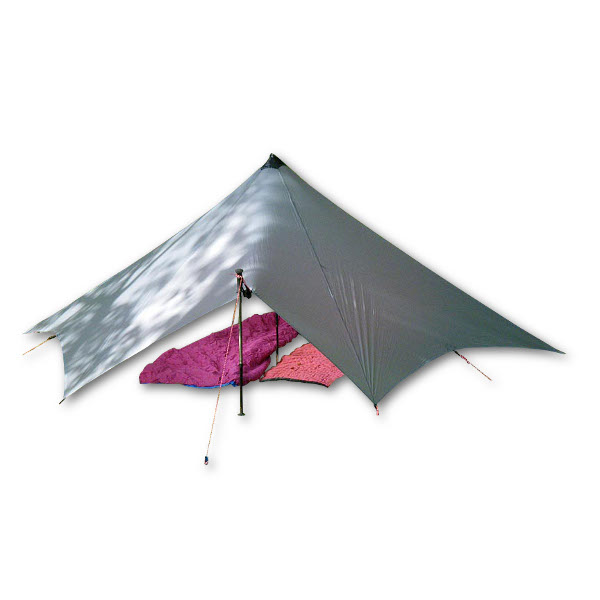




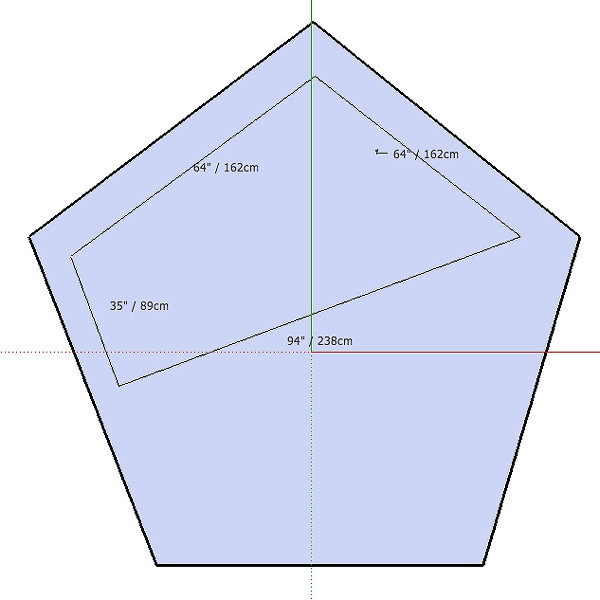
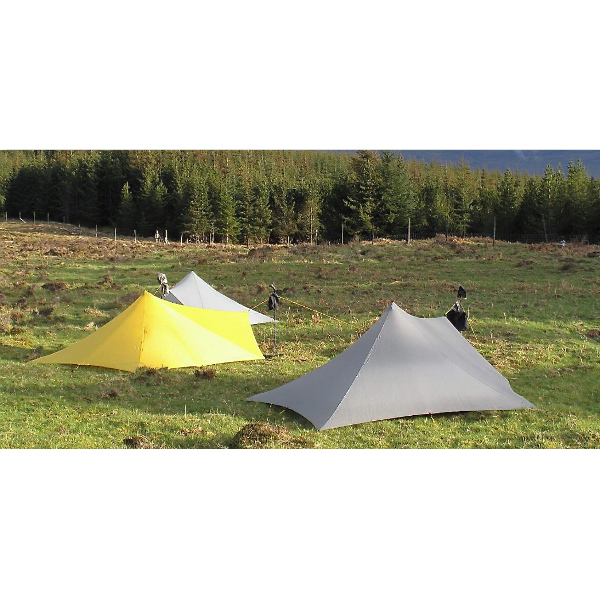

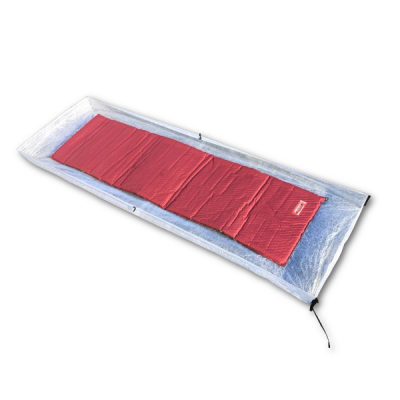
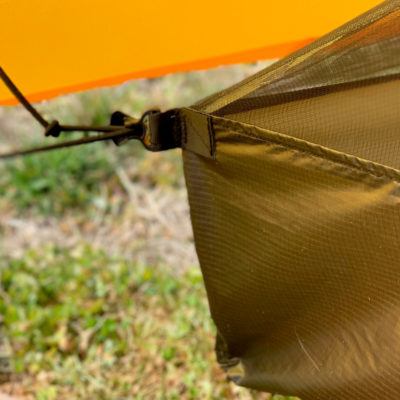

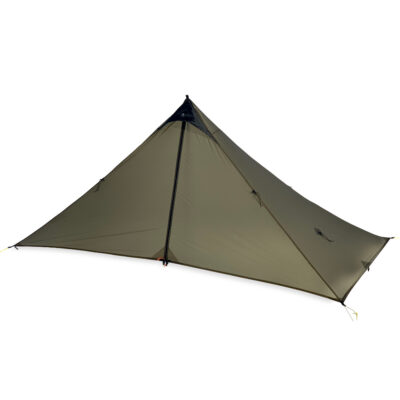
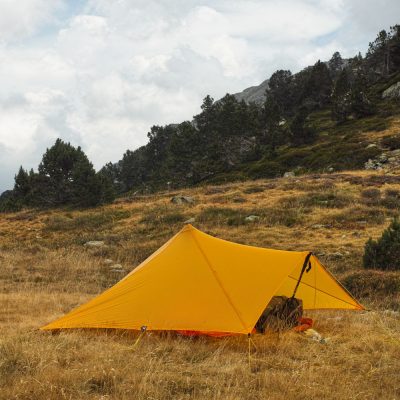
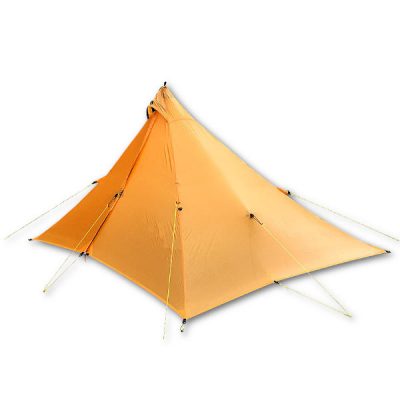
Noel Darlow (verified owner) –
Ordered Friday. Arrived following Tuesday – and I live in Scotland! Fantastic service from MLD.
Geoff –
I’ve had my silnylon TrailStar a few years now and used it extensively in the UK and the Western Alps.
It’s definitely a one-of-a-kind shelter – kudos to Ron for dreaming up such an innovative design. Its market is people who want to go very light into windy and exposed terrain which would normally require a much heavier alpine tent.
The TrailStar the only shaped tarp which is popular in UK conditions, where most camping is above the treeline and the winds can be fierce and capricious. It’s valued for its failproof simplicity, its near all-round coverage, and its unmatched wind-shedding capability. Given reliable peg placements, this thing is as bombproof as a shelter can get. And when well-pitched it hums in the wind rather than flaps, giving you a safe and quiet night’s sleep. You can also keep it open and ventilated in severe weather, a major plus compared to many shelters.
Using the TrailStar solo there’s plenty of space to sit upright, sort or pack your gear, rig up a clothes line, or unfold a map. And although the vendor can’t claim this for legal reasons, when the weather is bad there’s ample space and ventilation to cook safely inside (with sensible precautions) – it’s certainly a lot safer than juggling with a stove inside a small tent vestibule.
Last but not least the TrailStar is, IMHO, the most beautiful shelter out there. It’s a work of art, and looks great in pics.
So, the TrailStar is quite a specialised shelter, but in my experience if you want a shaped tarp that can handle the worst that nature can throw at it you have a shortlist of precisely one. It’s not for everyone, that’s for sure.
Frankie gilbert –
The tent is nice. I paired it with the net tent and works awesome. Dont go cheaper and try to find a substitute net tent to put in, just find one that is designed specifically for the trailstar (you won’t regret it). You have to somewhat crawl in so take that into consideration when buying one. Go with a pyramid tent if you want an easier approach to getting in.
Kaleb (verified owner) –
This is the best ultralight tent I’ve ever used. It meets exactly what I need in the backcountry. A superultralight, minimalist, stormproof and wind shearing design. If pitched correctly with enough stakes, I’m confident this tent can tackle 50 mph winds. It’s low angle pitch shears away more wind than I’ve seen. It’s especially effective if combined with a bivy to block wind coming under the walls, but this is only necessary if major storms are a possible hazard. I have used this tent on multiple occasions in the mountains in Alaska with proper campsite selection. It is true you can fit 3 hikers and all their gear. Except in all night rain, more often then not this tent is bone dry after you wake up because of how well it breathes. (I have the DCF version). I believe this is the best kept secret for anyone looking to keep in light in the Alaskan backcountry from spring to fall. I’ve used it deep in the Chugach and even on Kodiak Island and have only soaked a sleeping bag toe box one time which was from poor camp selection. It is possible to sit up inside the tent; however, I usually prefer to pitch it low to keep the wind out instead. You will not find a better tent for minimalism, a group (who must be well acquainted), SUL, and price. Look no further guys and give it a shot.
Linda West (verified owner) –
Took my Trailstar to Santa Rosa island which is always windy. Pitched it low and out where it would get hit by the wind. Just to see how it would fair. The only problem I had was with the trekking poles I used which are GG LT5 ultralight carbon poles. They are three piece and the lower section could not handle the wind force download. I made four adjustments during the night and finally once the lowest section was completely retracted I was able to raise the tarp center back up using just the upper section. (choose your trekking poles wisely)
Considering everyone else’s tents were thrashing about and their rain flies shredded and they all had to relocate inside their wind block structures, my trailstar was solid. The second night I had no problems as I made a center pole from a strong stick. I like the humming sound it makes. No hard flapping so I slept fine. Great shake down experience I now know this tent can handle steady 40mph winds no problem. I have the DCF .68 camo. I will soon be getting the inner tent.
Rob –
I can break down my outdoor pursuits into 2 categories, before Trailstar and after Trailstar. I have an inner with mine, totally necessary in sunny Scotland or you could use a bivy. Together they weigh 50% less than my Akto. In a Scottish storm I feel safer in the Trailstar, now that is saying something, it simply doesn’t budge. I feel like it has 3 times the internal space which is great when you are sitting out a storm. Another advantage is there isn’t a lot that can break and there are multiply ways to pitch.
Chris Wilsin –
Superb tent. Survived 50 mph + storm in the Hebrides ( Scotland ). Wind just blew right over. Great in rain too. Huge internal space. Great head height. Still experimenting with different pitches but this far after 14 nights out hugely impressed. Tent bag makes a good pillow case and all fits ina pocket.
Alejandro Braun (verified owner) –
An excellent shelter with more than enough room for a person, gear and a 65lb dog. While I haven’t tested the Trailstar to its full capabilities wind-wise, it’s kept me completely comfortable in rain and wind. The flexibility of it being a tarp encourages various pitching to handle different scenarios as well. Super easy to set up.
James Stone –
An excellent, versatile tent that feels bombproof in strong winds. I love the ability to be able to pitch over obstacles (rocks, bushes, etc.) when space is tight and the amount of space undercover is fantastic when the weather turns.
A bonus is being able to watch the sunrise from my sleeping bag. Most recommended!